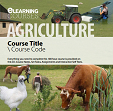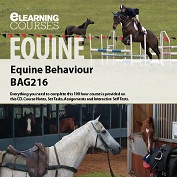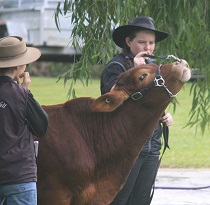
 How Much Do You already Know and Understand about Animals?
How Much Do You already Know and Understand about Animals?
To manage and care for animals of any type, you need to understand many different things about them; from their anatomy and physiology, to their psychology and the interactions that occur between animals and their environment (physical and biological).
Often people will commence a course such as this, with some significant knowledge in one or several of these things; but rarely with significant knowledge across all. To have a proper and balanced perspective, and underpin your capacity to manage animals, you need to have balanced knowledge across all of these areas.
How Do Animals Think?
Are animal actions all driven by instinct; or is there more to an animal than just that?
Animal cognition refers to as the study of the mental capacities in animals, including conditioning and learning competencies. Based on this, their capability and success in achieving goals would fit in with the term “intelligence”. Various experiments have been implemented to research and analyse the intelligence of animals.
Attention
It is important to be aware that just like humans, animals have variable attention spans. This knowledge is useful especially when trying to train animals. Under normal conditions the average dog has the attention span of around 15 minutes and much less in puppies and young dogs. During this time it is more open to learning and less resistant to control. Beyond this time a dog will get mentally tired and difficult to control. Dogs that are more experienced with training, and dogs with high drive for food and/or a toy will tend to have longer attention spans. However, factors such as hot weather or distracting environments can drastically reduce the amount of time a dog remains attentive.
Recent research has also shown that as well as humans and primates, some insects such as the dragonfly can demonstrate ‘selective attention’ to overcome distractions when hunting for food. Even though a moving swarm of other potential prey might be present, the dragonfly's brain filters these out and focuses on one selected victim. It is this that makes the dragonfly such an efficient predator.
 Memory
Memory
The analysis of human memory is compared to animal memory by the same sets of stored information; whether its short term memory, long term memory or working memory, they all resemble the process from which the information is processed, saved and retrieved.
Some animals such as the squirrels and some birds (e.g. tits, jays) rely on spatial memory to remember specific locations of where they have stored their supplies (e.g. food) regardless of any environmental influences or changes.
Chimpanzees have excellent visual memory, remembering objects and where they’re placed after only a very brief overview.
Elephants have such an extraordinary memory that they are able to use their spatial abilities and track down up to 30 individuals from their family group that have spread out through the field.
Sea lions seem to have an interestingly exceptional long-term memory; this well-developed cognition helps in identifying their prey, which they may only get to see once every 2-3 years.
Spatial cognition
Scientist have come across the conclusion that spatial cognition can be gained or lost depending on the amount of challenges confronted on a daily basis. For example, Many domesticated dogs are said to have lost the ability to find their own sources of food or to find their way back home successfully compared to their wild family members (e.g. other canids such as wolves) because humans have retained the need for them to keep practising these natural traits by providing them food and shelter.
Perception
It is easy to find out how humans perceive sights and sounds as we can just ask them to describe it. This obviously is not as straight forward in animals. As was discussed earlier, it is known that animals may hear at different sound frequencies and see different colour spectrums. However, by close observation and experimental work, it has been possible to gain an understanding on how animals may perceive other stimuli. Animals have been seen to pick out key features in certain situations. For example, a male robin has been seen to fly down and attack a bunch of red feathers on a lawn, perceiving it to be another male. Dragonflies have also been known to lay eggs on the shiny metallic surface of a car, perceiving it to have the same appearance as water.
 Reasoning and Insight
Reasoning and Insight
These terms have been used by scientists when animals have been observed solving problems very quickly which can not be attributed to ‘trial and error’. It has been suggested that the animal may be ‘thinking’ about the problem and trying ideas out in its brain before coming up with a solution. This has been demonstrated in trials with rats negotiating their way through quite complicated mazes. Many examples have also been described in primates who have been seen to come up with many quite ingenious solutions on ways to access food which has been placed out of reach. This may include joining sticks together or piling up boxes to stand on so that they could reach the food. Often they would arrive at these solutions quite suddenly, although they would have benefited from previous experience of playing with the boxes and sticks.
Another example of reasoning has been recorded in sheep dogs. If one ewe is split off from the rest of the flock, they can become very difficult to move and may even face up to the dog, stamping its hooves. In this situation, dogs have been seen to return to the main flock, separate off several other sheep and bring them back to the single ewe. The effectively made the difficult ewe feel as though she is once again part of a group and can be herded as usual.
What Next?
Step 1
Choose six modules from the list of animal courses here.
It may be possible to do one or two courses from other areas, but please discuss this with a tutor.
Step 2
Complete the build your own form at the bottom of this page.
Step 3
A tutor will review your module choices and confirm that they are suitable for your needs and interests.
Step 4
You can get started on the course.
Why Study This Course?
Our self-design certificates enable you to focus on an area of animal care and studies that interests you.
You can study online or by distance learning and work at your own pace on subjects that interest you.
This course is suitable for anyone wanting to learn more about a particular area of animal studies, such as -
- rescue workers
- pet shop workers
- veterinarians and their staff
- dog walkers
- animal groomers
- animal boarders
- animal breeders
- farmers
- smallholders
Questions?